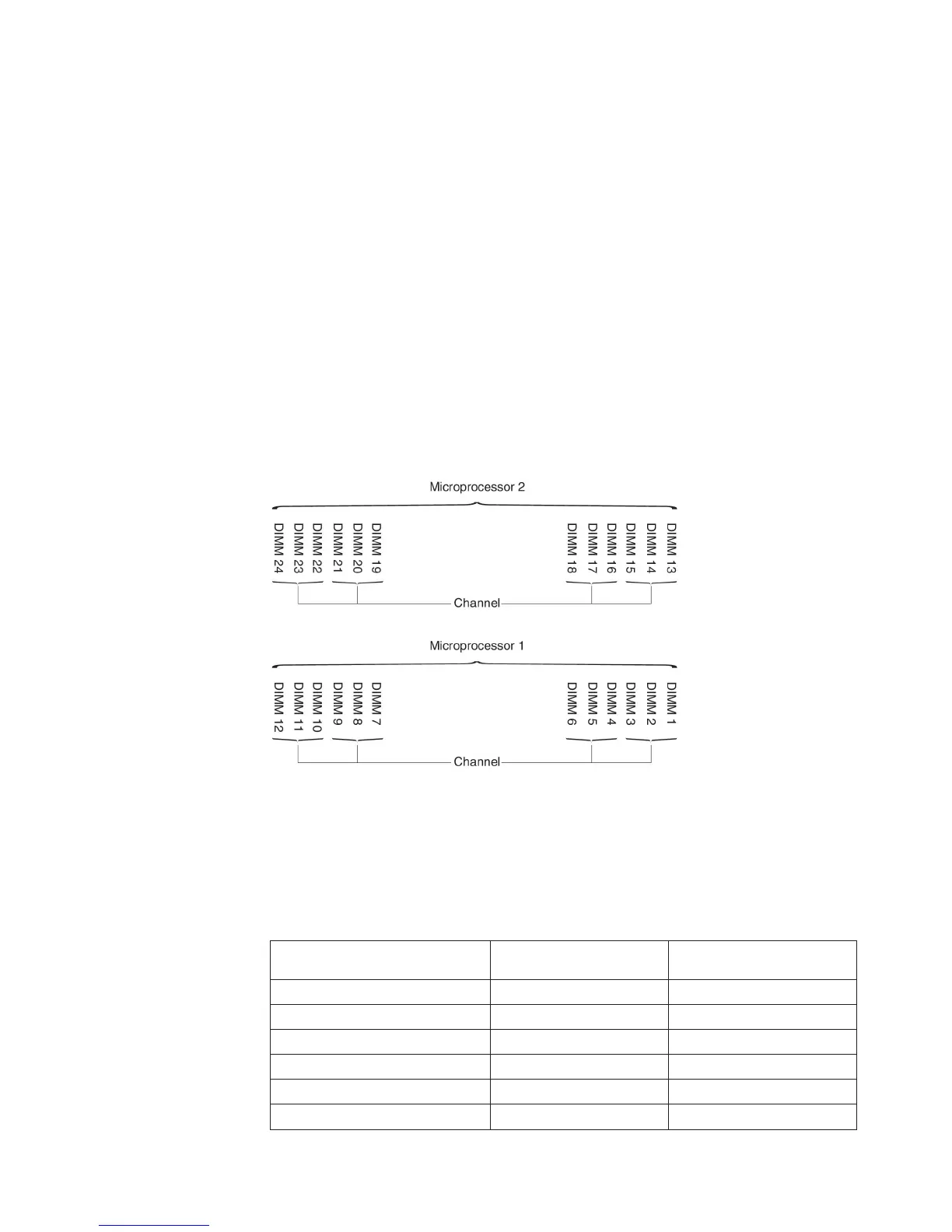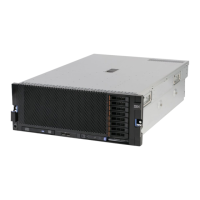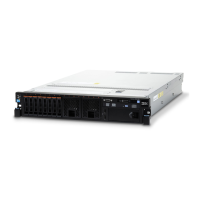Memory mirrored channel
Memory mirrored channel mode replicates and stores data on two pairs of DIMMs
within two channels simultaneously. If a failure occurs, the memory controller
switches from the primary pair of memory DIMMs to the backup pair of DIMMs. You
can enable memory mirrored in the Setup utility (see “Starting the Setup utility” on
page 121). When you use the memory mirrored channel feature, consider the
following information:
v When you use memory mirrored channel, you must install a pair of DIMMs at a
time. The two DIMMs in each pair must be identical in size, type, and rank
(single, dual, or quad), and organization, but not in speed. The channels run at
the speed of the slowest DIMM in any of the channels.
v The maximum available memory is reduced to half of the installed memory when
memory mirrored is enabled. For example, if you install 64 GB of memory using
RDIMMs, only 32 GB of addressable memory is available when you use memory
mirrored channel.
The following diagram lists the DIMM connectors on each memory channel.
Note: You can install DIMMs for microprocessor 2 as soon as you install
microprocessor 2; you do not have to wait until all of the DIMM connectors
for microprocessor 1 are filled.
The following table shows the installation sequence for memory mirrored mode:
Table 7. Memory mirrored channel mode DIMM population sequence
Number of DIMMs
Number of installed
microprocessor DIMM connector
First pair of DIMMs 1 1, 4
Second pair of DIMMs 1 9, 12
Third pair of DIMMs 1 2, 5
Fourth pair of DIMMs 1 8, 11
Fifth pair of DIMMs 1 7, 10
Sixth pair of DIMMs 1 3, 6
Figure 13. Connectors on each memory channel
Chapter 2. Installing optional devices 81
